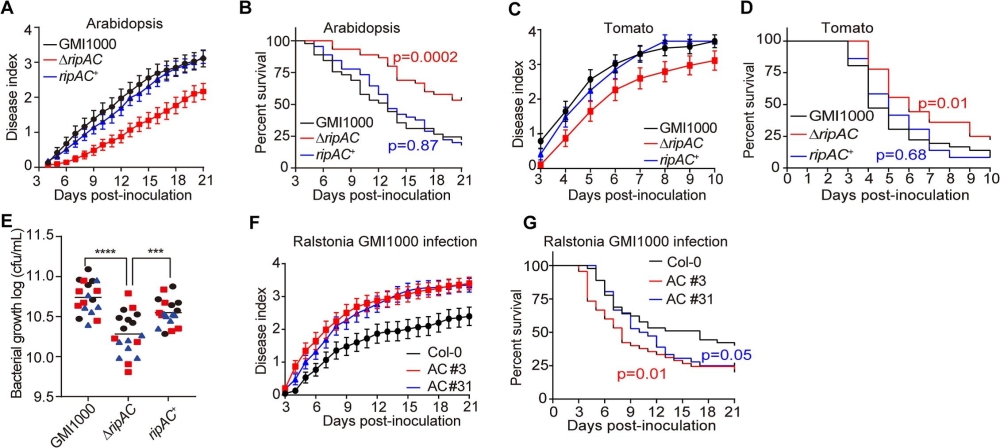New study uncovers a new immune-suppression mechanism employed by a bacterial pathogen
Scientists in Shanghai have discovered a novel molecular mechanism by which Ralstonia solanacearum, the causal agent of bacterial wilt disease, suppresses plant immunity to infect plants.
Plants has a multi-layered plant immune system, namely PAMP-triggered immunity (PTI) and Effector-triggered immunity (ETI). Ralstonia solanacearum is a notorious bacterial pathogen infecting important crops, such as potato, tomato, tobacco, banana, pepper and eggplant, among others, leading to enormous economic losses. Bacterial pathogens inject effector proteins inside plant cells to manipulate the plant immune system to enable its colonization. Recently, a study led by Dr. Alberto Macho at the Shanghai Center for Plant Stress Biology/ CAS Center for Excellence in Molecular Plant Sciences discovered that Ralstonia secretes an effector protein, named RipAC, which manipulates plant immune system to enable bacterial infection. The immune regulator SGT1 is essential for plant NLR protein accumulation and activation. In this study, scientists found that MAPK-mediated SGT1 phosphorylation is required for the robust activation of intracellular immune receptors, and Ralstonia solanacearum effector RipAC prevents the interaction between MAPKs and SGT1, thereby suppressing SGT1 phosphorylation and the subsequent effector-triggered immune responses, leading to plant bacterial wilt disease. This work was comprised in the projects of the postdoctoral researcher Dr. Gang Yu, and was recently published in PLoS Pathogens.
Ralstonia solanacearum is considered as one of the most devastating plant bacterial pathogens with no available resistant germplasms in major crops. In this study, overexpression of SGT1 in Arabidopsis could enhance its resistance to R. solanacearum infection. Moreover, expression of the phosphorylation-mimic form of SGT1 could increase this enhanced resistance further with no obvious growth and development penalty, raising the possibility of performing targeted editing of SGT1 to enhance disease resistance in plants.
This study has been funded by the Chinese Academy of Sciences, the National Natural Science Foundation of China, and China Postdoctoral Science Foundation.

ripAC: required full virulence of Ralstonia solanacearum
Link to the article: https://doi.org/10.1371/journal.ppat.1008933
Contact:
Prof. Alberto Macho
Email: alberto.macho@psc.ac.cn
Shanghai Center for Plant Stress Biology/ CAS Center for Excellence in Molecular Plant Sciences